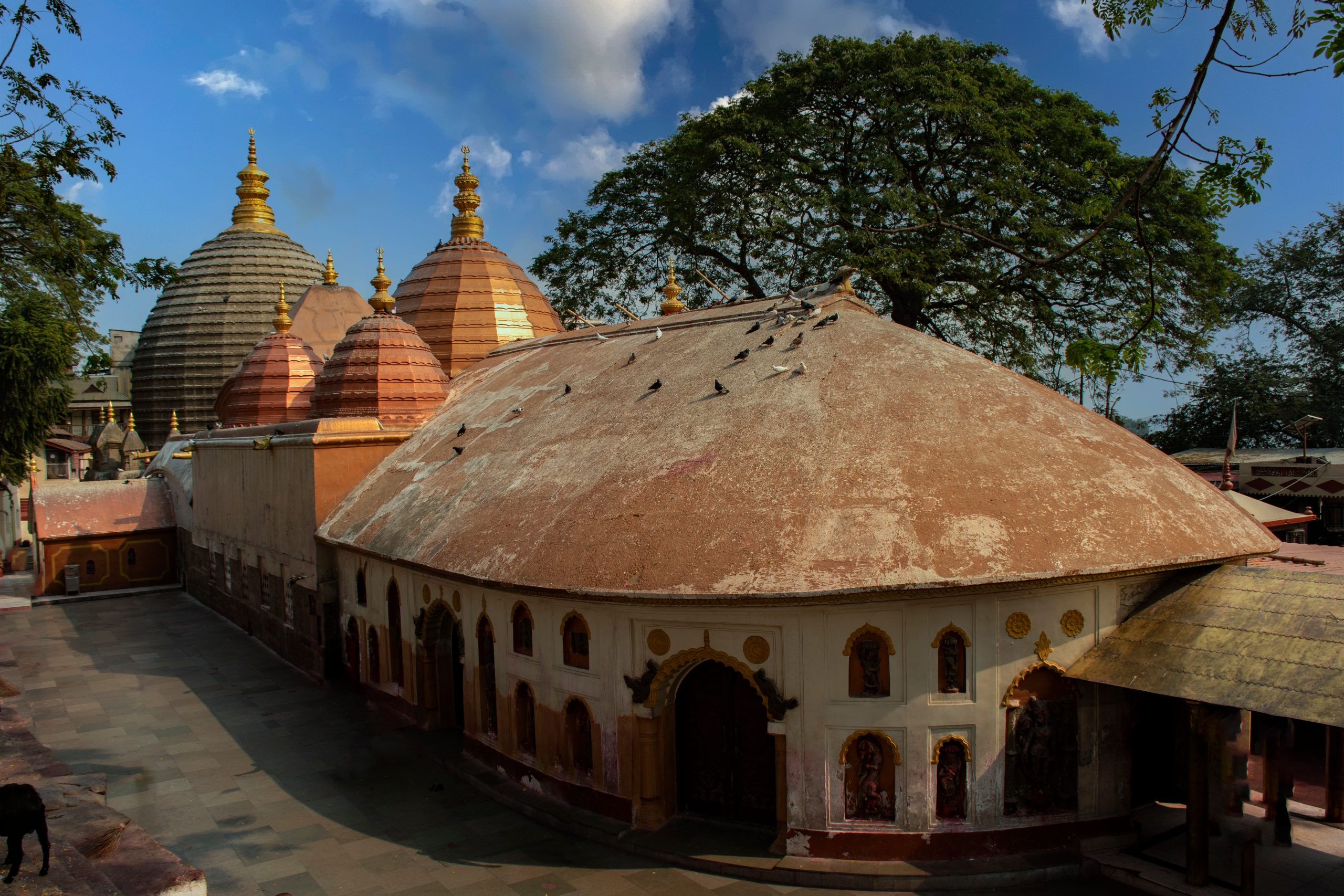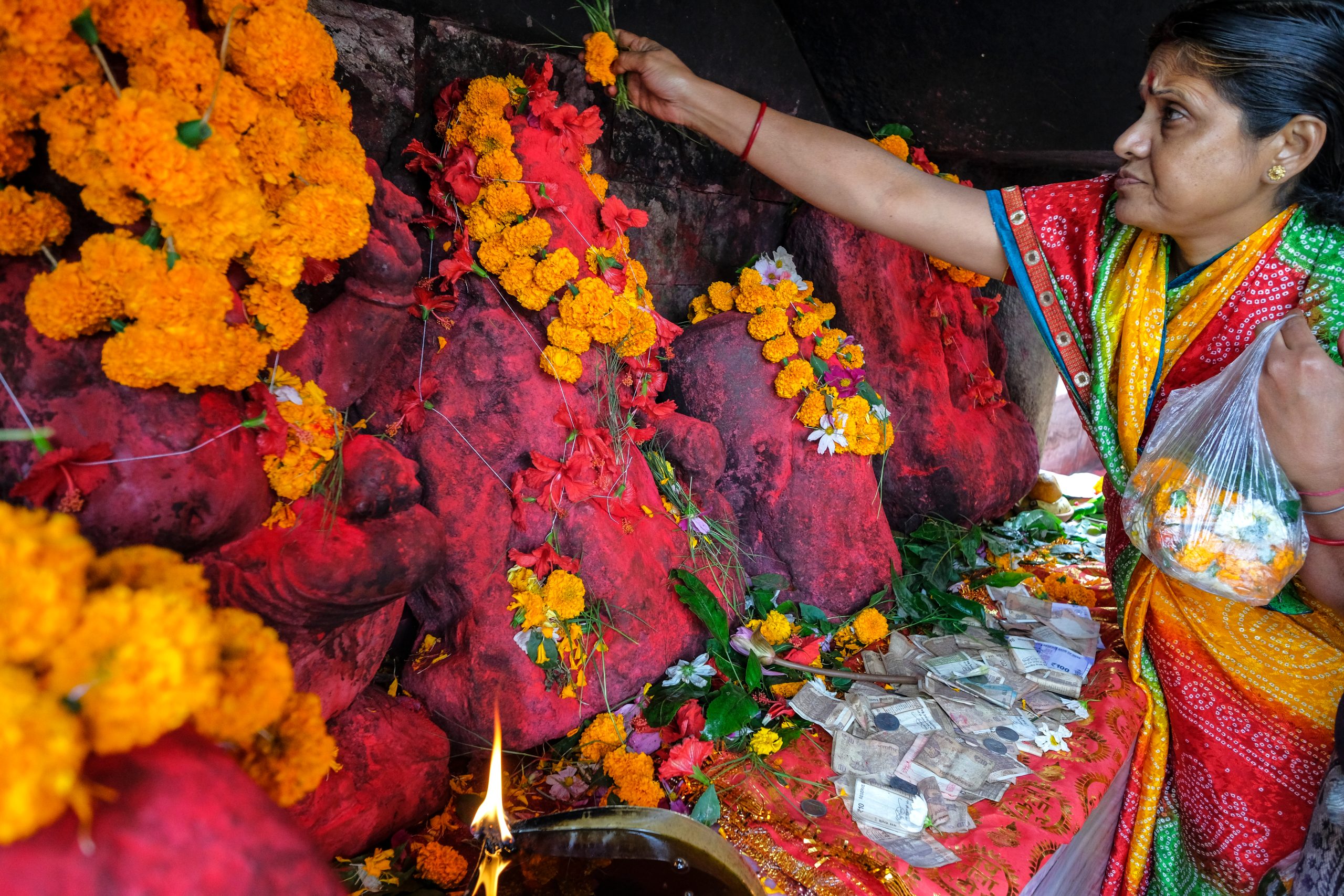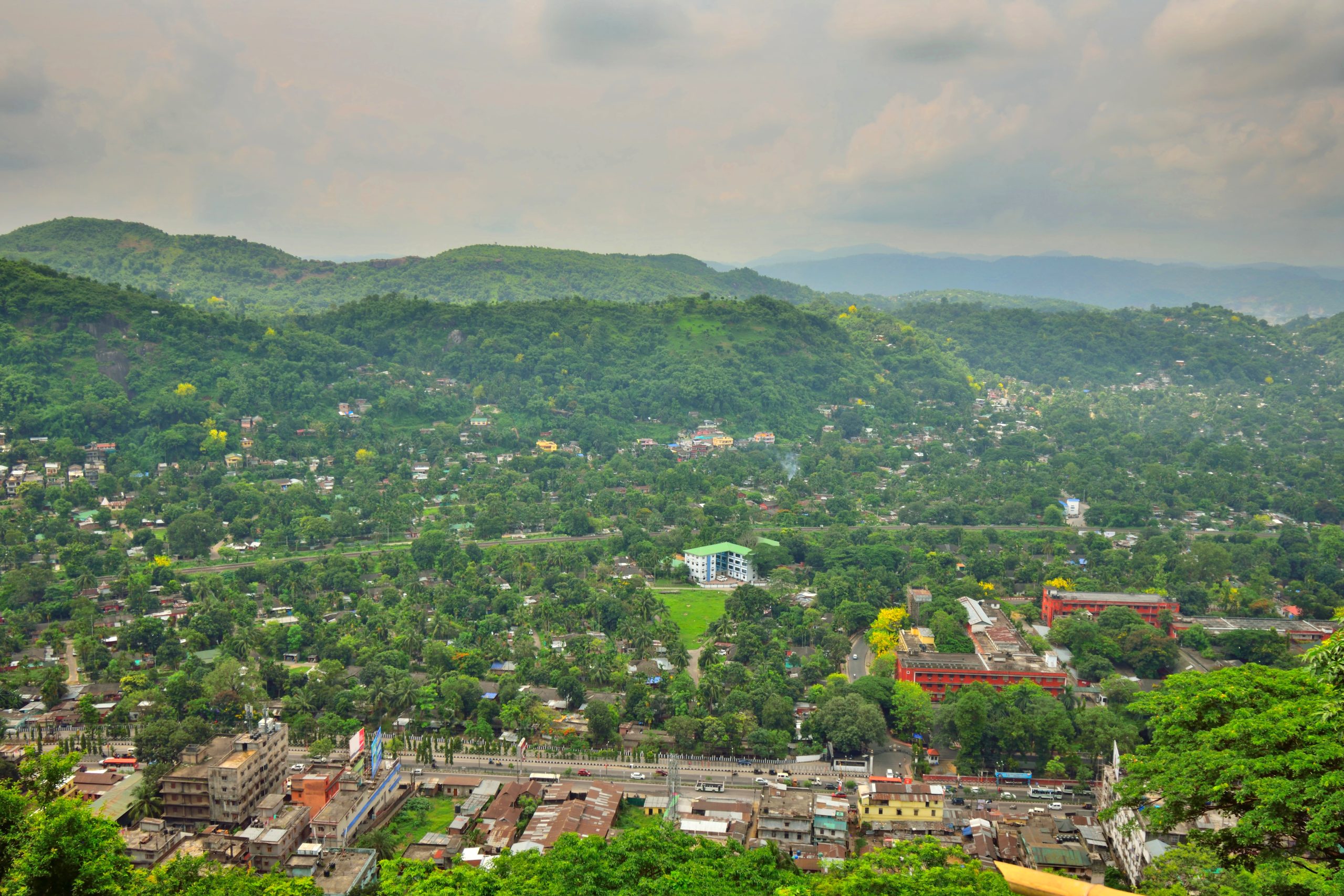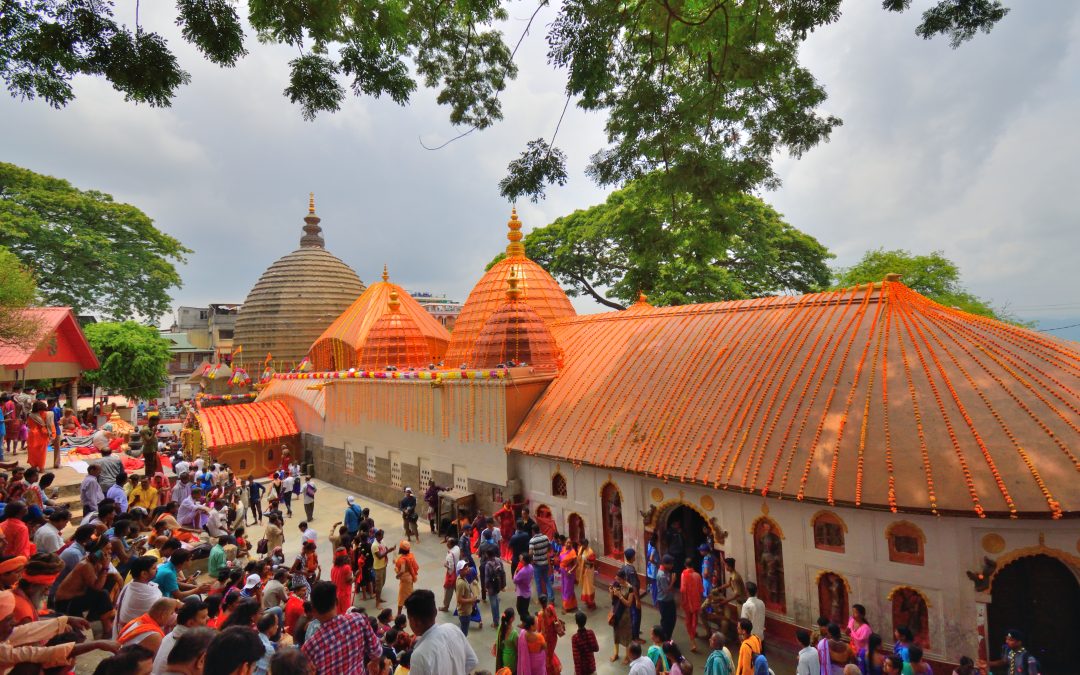Nestled on the Nilachal Hill in Guwahati in Assam, stands tall the Temple of Maa Kamakhya temple – a powerful seat of Shakti worship and one of the rare Shakti Peethas across the nation. Devotees from far and wide embark on a sacred pilgrimage to seek the grace of the Mother Goddess, making this journey a spiritually significant experience.

Let us embrace the power of Maa Kamakhya, and learn more about the recently inaugurated Kamakhya Temple Corridor, the temple’s rich history, and its profound importance for Hindu devotees. Further on, we will delve into the practical aspects of planning your pilgrimage, including how to reach the kamakhya devi temple and enhance your journey with the assistance of Zoop, India’s leading delivery service for delicious food in train!
Suggested Trip: Best Places To Visit In North East India
Maa Kamakhya Temple – The Divine Mother

The Kamakhya Temple stands as a beacon of Shakti worship, drawing spiritual seekers seeking freedom from the cycle of birth and death. This sacred site holds immense significance in Hindu mythology, as it is believed to be the place where the genitalia of Goddess Sati, the consort of Lord Shiva, fell. Lord Shiva, in his grief, constructed a Shakti temple on this hallowed ground, with the added presence of Lord Bhairav, a manifestation of Shiva. The ever-increasing number of pilgrims going to the temple every year is a testament to the temple’s meaningful impact on Hindi devotees, in terms of its sacred aura, and its role in moving individuals towards transcendence.
Maa Kamakhya Temple Corridor

A transformative initiative in recent times, the Maa Kamakhya Divyalok Pariyojana, popularly known as the Kamakhya Temple Corridor, stands as a testament to ongoing efforts to enhance the pilgrimage experience. With a substantial budget of Rs 498 crore, this corridor aims to elevate the infrastructure surrounding the Kamakhya Temple, providing devotees with an immersive and spiritually enriching environment. Drawing parallels with the Kashi-Vishwanath Temple Corridor in Varanasi, this project signifies a commitment to preserving and elevating the spiritual heritage of the region.
History and Cultural Heritage of Kamakhya Temple
Diving deep into the history of the Kamakhya Temple shows its deep cultural roots and relevance in old traditions. It has been an important site for people over centuries, who would come here to receive blessings. The temple’s secrets and traditions make it spiritually important, drawing both religious followers and those interested in cultural and historical exploration.
How to Reach Maa Kamakhya Temple:
Go on a pilgrimage to Maa Kamakhya involves careful planning, starting with choosing the right mode of transportation. For air travel, Lokpriya Gopinath Bordoloi International Airport, also known as Guwahati International Airport, is the nearest airport, conveniently connecting flights from major Indian cities.
| Transport Mode | Nearest Place | Distance | Estimated Time |
|---|---|---|---|
| By Air | Lokpriya Gopinath Bordoloi International Airport (Guwahati) | 18 km | 45 minutes – 1 hour |
| By Train | Guwahati Railway Station | 8 km | 30 minutes – 1 hour |
| By Bus | Guwahati ISBT (Inter State Bus Terminus) | 8 km | 30 minutes – 1 hour |
| By Car | Kamakhya Gate | 7 km | 20 – 30 minutes |
Traveling by rail offers the option of arriving at either Kamakhya Railway Station or Guwahati Railway Station, with the latter being a more well-connected hub. From the railway station, multiple transportation options, including auto-rickshaws and buses, are available for the approximately 8 km journey to the temple. Additionally, for those seeking a more spiritual ascent, the temple is accessible on foot via the rock-cut staircase from the base of Nilachal Hill.
Enhancing Your Train Journey with Zoop
Introducing Zoop, a revolutionary delivery service for food in train journeys, designed to elevate the overall travel experience. Recognized by the Indian Railways Catering and Tourism Corporation (IRCTC), Zoop collaborates with reliable food caterers, renowned restaurants, and popular fast-food chains across various cities, ensuring passengers can savor diverse and quality meals right at their seats. With a commitment to cleanliness and safety, Zoop guarantees FSSAI-approved meals, instilling confidence in the preparation and safety of your meals. Beyond food delivery, Zoop offers additional features such as ordering in bulk for groups, checking PNR status, locating platforms, checking train schedules, and finding coach positions, making it an indispensable companion for a seamless journey.
Additional Tips for Your Kamakhya Devi Pilgrimage
Save Money on Your Ticket:
For a budget-friendly and hassle-free journey, follow these smart tips. Plan ahead and book your train tickets 15-20 days early to grab big discounts and avoid last-minute charges. Look out for cashback offers and think about using IRCTC payment cards for extra savings. Choose the sleeper class for a cost-effective travel option without compromising on the experience. Stay flexible – if plans change, cancel your ticket before the final preparation to get a refund and avoid unnecessary expenses. Cut down your ticket cost by opting out of onboard meals during booking, giving you the option to order affordable meals on the train through Zoop. Grab more savings with Zoop offers, using codes like ZOOP50 or ZOOP100 for a better culinary experience while keeping your budget intact.
Order Food in Bulk:
If you’re traveling with family, consider using Zoop’s group ordering feature for added convenience. This allows you to plan and coordinate meals seamlessly, ensuring everyone’s preferences are accommodated. Order food in train for your entire group for upcoming journey: https://www.zoopindia.com/group-food-order-in-train
Visit Kamakhya Temple at the Most Suitable Time:
Choose the optimal time for your pilgrimage. The post-monsoon season, from October to February, provides pleasant weather and clear skies. For those seeking adventure amid occasional rainfall, June to September is an option, though paths may be slippery. Your choice will depend on personal preferences and the experience you desire.
| Factor | Most Suitable Time | Description |
|---|---|---|
| Weather | Post-monsoon (October – February) | Pleasant temperatures (15°C – 30°C) with clear skies and minimal rainfall, making it comfortable for sightseeing and outdoor activities. |
| Crowd | Weekdays (except Tuesdays) | Weekends and Tuesdays, especially during festivals, tend to be crowded. Weekdays offer a calmer and less congested atmosphere for darshan. |
| Festivals | Avoid major festivals | Major festivals like Ambubachi Mela (June) attract large crowds and involve temple closure for specific periods. Consider visiting outside these times for a more peaceful experience. |
| Time of Day | Early mornings or afternoons | The temple is open from 5:30 AM to 1:00 PM and 2:30 PM to 5:30 PM. Mornings and afternoons generally have shorter queues compared to peak hours. |
Explore Nearby Places:
Take advantage of your visit to Kamakhya Temple by exploring the surrounding areas. Perched on Nilachal Hill in Guwahati, the temple offers breathtaking views of the Brahmaputra River and lush forests. Immerse yourself not only in spirituality but also in the natural beauty of this unique destination.
In conclusion, a pilgrimage to the Kamakhya Devi Temple promises a spiritually enlightening experience. To make the pilgrimage even more blissful and convenient for devotees, the Indian Government has recently inaugurated the Kamakhya Temple Corridor. Zoop further enhances the journey, ensuring a fulfilling pilgrimage for every traveler!
Suggested Blogs-


